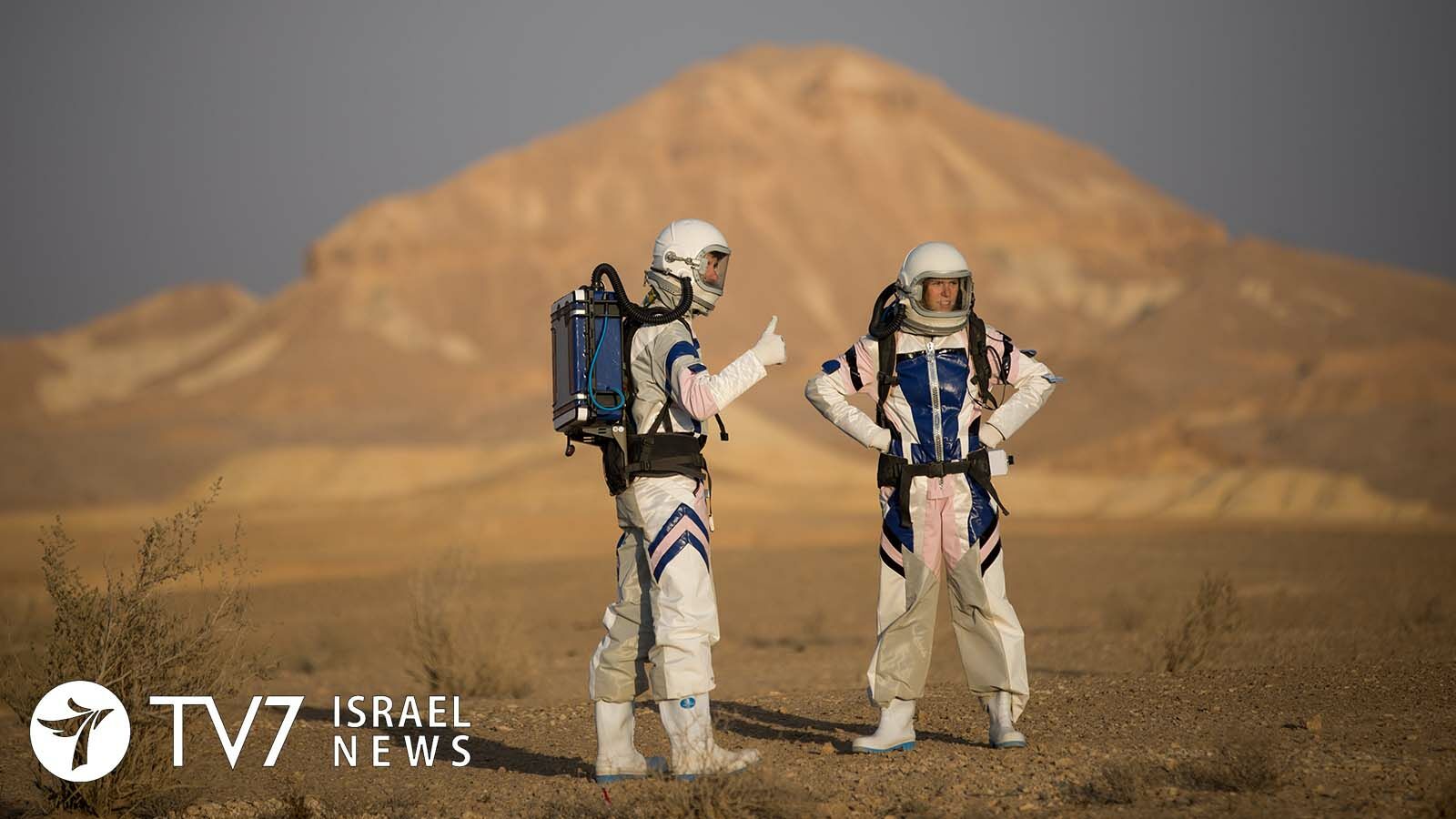Analog members of the AMADEE-20 Mars Simulation team just completed an intensive 3-week mission in the Ramon Crater in the Negev Desert.
By Erin Viner
“We felt as if we were on Mars,” said Israeli analog astronaut Alon Tenzer, “and on many occasions the mission has such an immersive effect that you can really believe it for a few moments, but for the rest of the time you really live it. This simulation goes way beyond something make-believe.”
Tenzer made his observations at a festive gathering at the President’s Residence in Jerusalem to celebrate the successful conclusion of the simulated visit to the surface of the Red Planet.
The AMADEE-20 Mars Simulation was run by the Israel Space Agency (ISA) at the Ministry of Innovation, Science, and Technology and the Austrian Space Forum in collaboration with the Desert Mars Analog Ramon Station (D-MARS). The 6-member team also included astronauts from 5 other nations.
Mirroring assignments for future human missions to the planet, the analog team inhabited an airlocked “space station” in total isolation for 3 weeks at the Ramon Crater, which was specifically chosen due to its similarity to the surface of Mars, and donned spacesuits while conducting pioneering scientific and technological experiments outdoors.
“You are making history. If there is something that unites humanity, it’s the future life of the universe and the life of the human species,” Israeli President Isaac Herzog told the team, adding that their experience “is fascinating in all aspects.”
“AMADEE-20 is just one example of how far we can get to promote space exploration in Israel, for the dreams of the children in Israel,” remarked CEO of D-MARS Dr. Hillel Rubinstein, who attended the event along with other leaders of the international space industry.
The guests were treated to demonstrations of advanced Israeli-made space technologies, which included the StemRad anti-solar radiation spacesuits slated to be used during NASA’s Artemis moon mission, Helios products capable of creating oxygen from moon dust, a SpacePharma nanosatellite that can perform pharmaceutical experiments in orbit, and another advanced nanosatellite with deployable antennae developed by NSL Comm capable of providing ultra-high data rates from space.
ISA Director General Uri Oro vowed that the agency “will continue to work to expand the space ecosystem in Israel, to promote international collaboration, and to strengthen Israel’s world status as a space power.”
After stating that AMADEE-20 “was the most modern, most complex Mars simulation in the world,” Director General of the Austrian Space Forum, Dr. Gernot Grömer, said, “We firmly believe that the very first human to walk on Mars has already been born and the first human mission to Mars will take place in the next 20-30 years.”
That human very well could be Israeli 12-year-old Sapir Yosef, who was among children studying with the Tevel satellite-building program and AMADEE-20 invited to the presidential gathering.
“My love for space started at elementary school, where I was first introduced to space studies,” said the youngster from the central Israeli city of Rosh Ha’Ayin, whose resume already includes leadership of a team that won first place in the Israeli Space Olympics last year.
